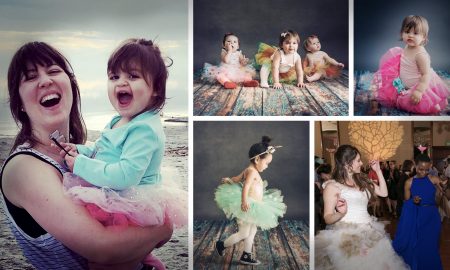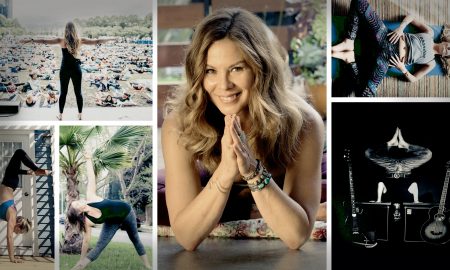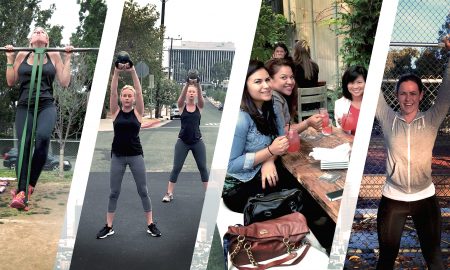

Today we’d like to introduce you to T Shupe.
Alright, so thank you so much for sharing your story and insight with our readers. To kick things off, can you tell us a bit about how you got started?
Ally: As a kid, I was the ultimate homebody. My love for my humble abode knew no bounds. My mom’s incredible sense of style in decorating our home deeply influenced me, igniting my passion for all things interior design. I would spend hours as a child happily playing “room makeover” in my own little domain. I had a knack for blending different styles and patterns, always eager to give my strong opinion when my mom undertook the task of redecorating our childhood home. When I was 15, life took an unexpected turn when my parents sat us down to tell us we were moving out of state. The news was devastating—I had spent my entire life in Orange County, California, and never imagined we would leave. Relocating to a home in a new place with limited friends, I found solace and a creative outlet in decorating our new space alongside my mom.
My dad was diagnosed with terminal cancer soon after our move, and he passed away just 15 months later. The profound changes I went through during that period not only shaped my outlook on life but also cultivated a profound appreciation for the significance of my home. It was in those moments, marked by my dad’s passing, that I truly understood the importance of our homes and the memories they hold. This realization sparked a deep appreciation for the transformative power of interior design and a desire to be a part of that process.
When Taylor and I got married, we traveled extensively throughout Asia. Being part Japanese, I loved exploring and learning about different parts of Asia and studying their artisanal crafts. Taylor’s work eventually brought us to China, where we lived abroad in a little town outside of Shanghai. He was working on building a new manufactory that would defy a lot of the traditional ways of thinking in that industry.
Taylor: I’ve always been interested in art and design. Stance, the company I co-founded, was a merger of innovative products and expressive design. I found a lot of interest in building value in mundane and commoditized markets. I started in socks and then eventually went upstream into clothing manufacturing. I found that most problems I faced in entrepreneurship could be solved through thoughtful design.
I built my business hypothesis around the quality of life of my employees. We worked with Zhang Lei–one of the most widely-acclaimed architects in the country–to design an environment that had never been done in manufacturing and the results were pretty tremendous, earning us both the highest level of social compliance and the highest LEED ecological score in the world.
The result of this additional effort into the design–both physical and metaphysical–has created an unparalleled competitive advantage in my industry.
Ally: It was this factory project–which was over 280,000 sq ft – build that ignited my passion to a new level. We designed this building to be a home, a school, a restaurant, an entertainment center, and a super-efficient manufactory that looked and felt like an art gallery.
After our project, I got serious about my design interest. I started an internship with an interior design firm and eventually became a senior designer. Along the way, I read, I took classes, and I studied all of the greats.
As an interior designer, my greatest satisfaction comes from crafting spaces that not only provide comfort and happiness but also evoke a sense of nostalgia for my clients. While I aim to meet their expectations, I also strive to push them outside of their comfort zones to create something entirely unique and unexpected. To achieve this balance, I take the time to get to know my clients and their preferences. I enjoy incorporating traditional design elements and infusing them with an unexpected twist to bring a new dimension to the space.
Alright, so let’s dig a little deeper into the story – has it been an easy path overall and if not, what were the challenges you’ve had to overcome?
Ally: Starting my own design business was undeniably challenging, and the added twist of launching it amidst a global pandemic made it quite an interesting journey. While Taylor embodies the entrepreneurial spirit, I leaned heavily on his guidance to navigate the process of establishing the business and finding my own path. One crucial lesson that has resonated with me is the significance of taking the leap without waiting for perfection. Instead of waiting for all the pieces to fall perfectly into place, I embraced a mindset of continuous learning, actively seeking advice from seasoned designers, and remaining open to new opportunities. If I had hesitated until everything was flawless, I might have missed out on the amazing experiences and growth that came along the way. Being teachable, vulnerable, and receptive to guidance played a pivotal role in shaping my entrepreneurial journey. In the design industry, I’ve come to appreciate the reality of both exhilarating highs and challenging lows. It’s a dynamic field that demands resilience and adaptability. Rather than allowing these fluctuations to discourage me, I’ve learned to embrace them as opportunities for personal and professional growth. The ability to pivot, innovate, and explore new approaches has been instrumental in navigating the ever-changing landscape of design. Through these experiences, I’ve discovered the strength and determination needed to thrive in this creative realm.
Over the past few years, I’ve learned to appreciate that it’s never too late to pursue your passions. While there may be societal expectations or personal priorities that lead us to delay our dreams, I’ve realized the importance of carving out our own paths. I didn’t fully embark on my career until my thirties, and it has been a rewarding journey of self-discovery and fulfillment. As women, we often prioritize the needs of others, but finding the balance and pursuing our own aspirations is crucial to leading a fulfilling life. It’s a reminder that we have the power to create our own narrative and make our dreams a reality.
Taylor: I’ve been tremendously proud of Ally’s professional success. I knew she could do it before she took the leap. She’s always been the person I’ve relied on most for eye and taste and I think a lot of people in our social circle feel the same way. I mean, we have friends and family who won’t go to any important event without an Ally approval on outfits, hair, and makeup!
I think she thought entrepreneurship was going to come easier than it did. I had more experience in this area and so I knew that failure was an important part of the journey. I was used to pitching 50 investors to get one ‘yes’. I’ve also had numerous businesses fail.
But she always picked herself back up and relentlessly pursued this dream of hers. I think because she was more mature and had many more life experiences than others around her, she had many unique points of view that made her design truly interesting. I often see this with some of the most successful creatives in business–the classically trained often trail the creativity of the non-classically trained. Many creative savants have no traditional education.
Appreciate you sharing that. What else should we know about what you do?
Taylor: For me, design is the pinnacle of human existence. There’s nothing that elevates the human condition more than good design. And when I think of many of the societal problems we face, I think most correlate with bad design.
My main professional passion right now is focused on two social stigmas that have been exacerbated by bad design: the justice system and factory work.
Nothing about the prison system is designed properly for rehabilitation–it’s all about punishment and monetization. We have over a 50% recidivism rate in California because of the poor design of the system. I’ve set out on a mission to build factories that feel like sanctuaries with programming that can really help rehabilitate people who’ve been discarded by society.
My first US factory is located in North County, San Diego. We’re taking over another building next month. We’re at a 0% recidivism rate and over double the market average retention levels.
Ally: Social media has unexpectedly become a pillar of support for my business. It’s been both a challenge and a tremendous joy in my professional journey. Opening up and being vulnerable online can feel daunting, but it has also allowed me to forge connections with incredible individuals I wouldn’t have had the opportunity to meet otherwise. What’s even more exciting is that it gives me the chance to be a “designer” for a wider audience. While interior design services are often considered a luxury, platforms like Instagram enable me to connect with my followers, sharing mood boards, sources, and links to provide guidance for those in need or on a limited budget. It’s a way for me to extend my reach and offer assistance beyond traditional design services.
Contact Info:
- Website: https://www.shupe.design/
- Instagram: https://www.instagram.com/shupe.design/

Image Credits
Shupe Design











